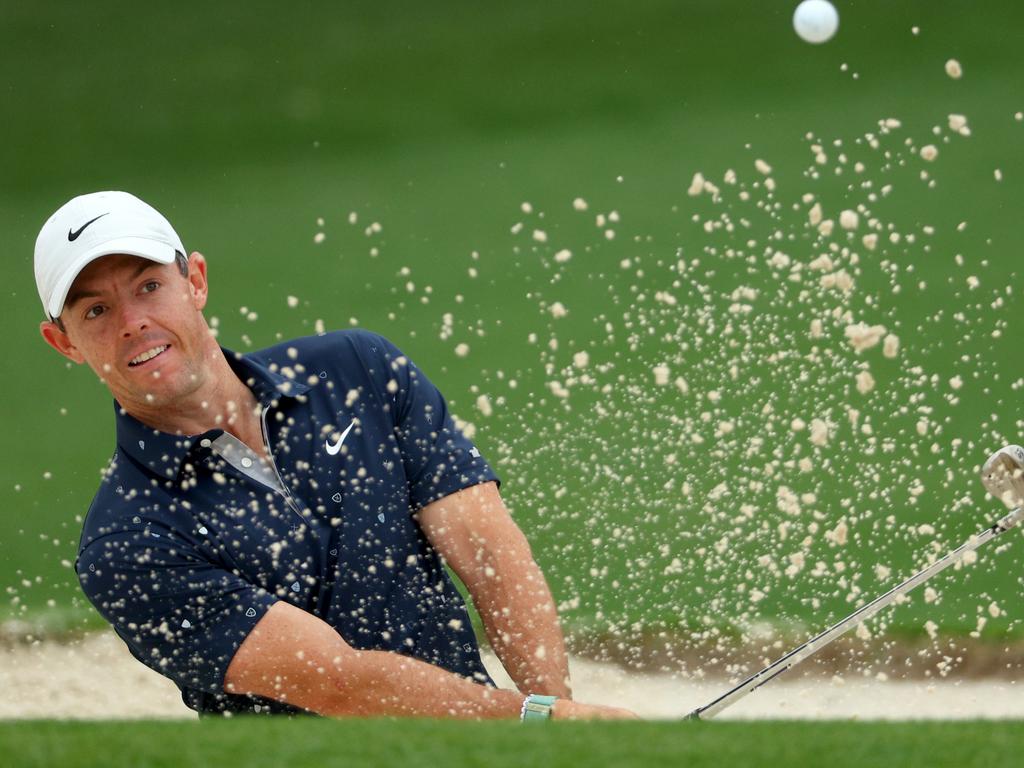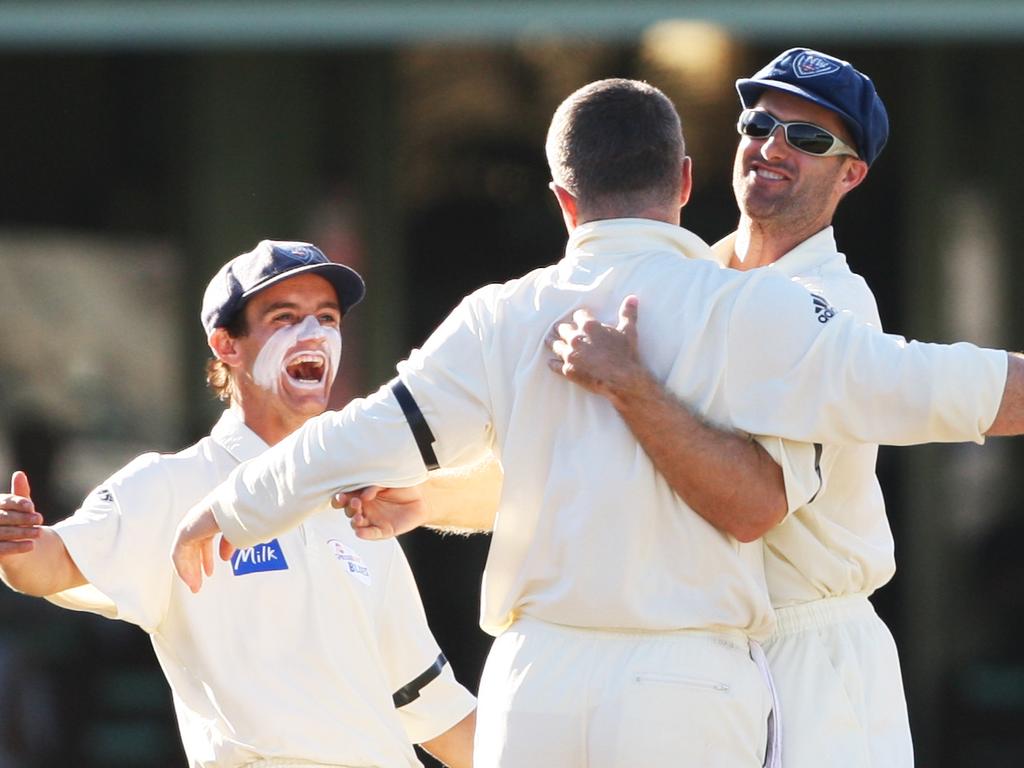The growing problem looming over the US Masters
The Augusta National chairman has delivered a blunt message about the escalating power of modern golfers.

Fred Ridley, the chairman of the stoic Augusta National Golf Club, delivered an unusually blunt message last year about his club’s ability to combat one of its biggest challenges: the escalating power of modern golfers.
Golf course designers have been in an intensifying battle with players, who now use sheer power to overcome all obstacles that are thrown in their way. The Masters, the only major held at the same course every year, has tried to keep up by constantly tinkering with its famed grounds and making Augusta National longer.
But constantly chopping down trees, moving tee boxes back and sending in construction crews may not be a sustainable solution. That was Ridley’s message.
The tension over this issue at the Masters is approaching a breaking point.
“We hope there will not come a day when the Masters or any golf championship will have to be played at 8000 yards to achieve that objective,” Ridley said. “This is an important crossroads.”
The Masters in 2022 won’t be 8000 yards long. It will be closer than ever, however. The listed distance of 7510 yards is the lengthiest in the major’s history.
It follows the evolution of the game over the last couple of decades that has been defined by one prevailing theme: Power is king. And that is raising deeper questions about the direction of the sport and this iconic tournament.
Backed by the type of big data that has flooded sports in recent years, the best golfers on the planet have increasingly learned that the smartest way to tackle the most difficult courses is to blast the ball as hard as possible and live with the consequences when it misses the fairway. Not everyone is a fan of the aesthetics.
Yet this is increasingly how the top pros tackle the toughest tournaments.
For years now, golf’s governing bodies have been studying the problem. Mike Davis, then the head of the US Golf Association, in 2017 described the “horrible” impact of distance on the sport. Since then, the USGA and UK-based R&A have issued a series of reports that analyse the annual changes in the game. And those changes are sweeping.
In less than 20 years, from 2003 to 2021, the average distance of drives has jumped from 285.9 yards to 296.2 yards on measured holes, according to the latest Annual Driving Distance Report. Where this growth is clearest is among the players who hit the ball farthest. Nineteen years ago, just 26.6 per cent of PGA Tour drives went at least 300 yards. In 2021, that was 43.5 per cent. It is increasingly routine for golfers to club the ball the length of three football fields.
“Any further significant increases in hitting distances at the highest level are undesirable,” the report says.
The long-term question is whether there should be tweaks to the specifications of golf balls to reduce their boom. In the meantime, what was once dubbed “Tiger-proofing” – when courses would be lengthened to account for the power of a younger Tiger Woods – is how many clubs try to reckon with an entire generation of golfers, many of whom now hit it farther than Woods. That’s what confronts the Masters.
Other iconic courses and tournaments have potent natural defences to stymie golfers. The wind at the British Open can send the best-struck balls far off course. US Open hosts grow the rough so long and dense that golf balls can be difficult to find.
Augusta National has its armour, too – famously tricky greens, rolling hills and difficult angles that force players to constantly alter the trajectory of their shots. But when golfers hit the ball farther, that can imbalance the risk-reward equation they face at this course in particular.
The increasing driving prowess of golf pros effectively makes the holes shorter. The solution is to make the holes longer. That’s what Augusta National did again before this major.
The 11th hole, nicknamed “White Dogwood” and the beginning of the famed Amen Corner, is one of the holes that has been overhauled to accommodate this modern reality. The par-4 was 505 yards a year ago. It’s 520 yards now. Adding 15 yards to a hole, though, does not simply make it 15 yards longer.
The idea is that any changes and added distance should alter – and challenge – what shots are reasonable and feasible for the best golfers. Those tweaks, when done right, can amplify the threat from hazards that already exist.
No.11 “is basically a new golf hole”, Rory McIlroy says. He noted that the tee shot on 11 is actually less daunting because a collection of trees on the right side of the hole have been removed. That could make going that way more appealing – but a handful of trees, located where a pro might just land his tee shot, are still there to create havoc.
The hole’s added length, then, will prove particularly difficult for players’ second shots. They have to reckon with an additional 15 yards to a green that is notoriously hard to land on – this hole already historically ranked as the second toughest on the course. The water left of the green is now more in play, making the angle of any approach shot more critical.
“The penalty for missing the second shot is greater than it was before,” McIlroy said.
The 15th is the other one that was notably stretched out. At 550 yards, it’s now 20 yards longer. “Firethorn” has ranked as the second-easiest hole during the Masters. The par-5 is often reachable in two shots, giving players a golden chance at eagle.
The new location of the tee box juices up the pitfalls of doing just that. Anyone who wants to go for the green in two is now essentially forced to go up the right side to avoid a cluster of trees that can get in the way. And those extra 20 yards won’t be especially fun for anyone whose ball lands in the water – which happens to be right in front of the green.
It may sound like a posh concern when the rich and famous Augusta National Golf Club has to tweak its grounds from time to time. But it’s a problem facing courses everywhere as they grow in length to accommodate modern trends. Longer courses mean longer rounds of golf for weekend warriors. They cost more to maintain – in terms of dollars and environmental resources.
It is perhaps not a coincidence that Ridley’s existential musings about the effect of distance on golf and the tournament he oversees came after Dustin Johnson had broken the Masters record in 2020 when he won at 20-under par. That year also had the lowest scoring average on record.
Still, that edition of the tournament was unusual in many ways – it was played in November after it was delayed during the pandemic’s onset.
When Hideki Matsuyama won a year ago, his 10-under par finish was more normal.
The impact of these changes on Augusta National remains to be seen. Of course, it will still be the Masters. It will just be longer than ever.
Wall Street Journal






